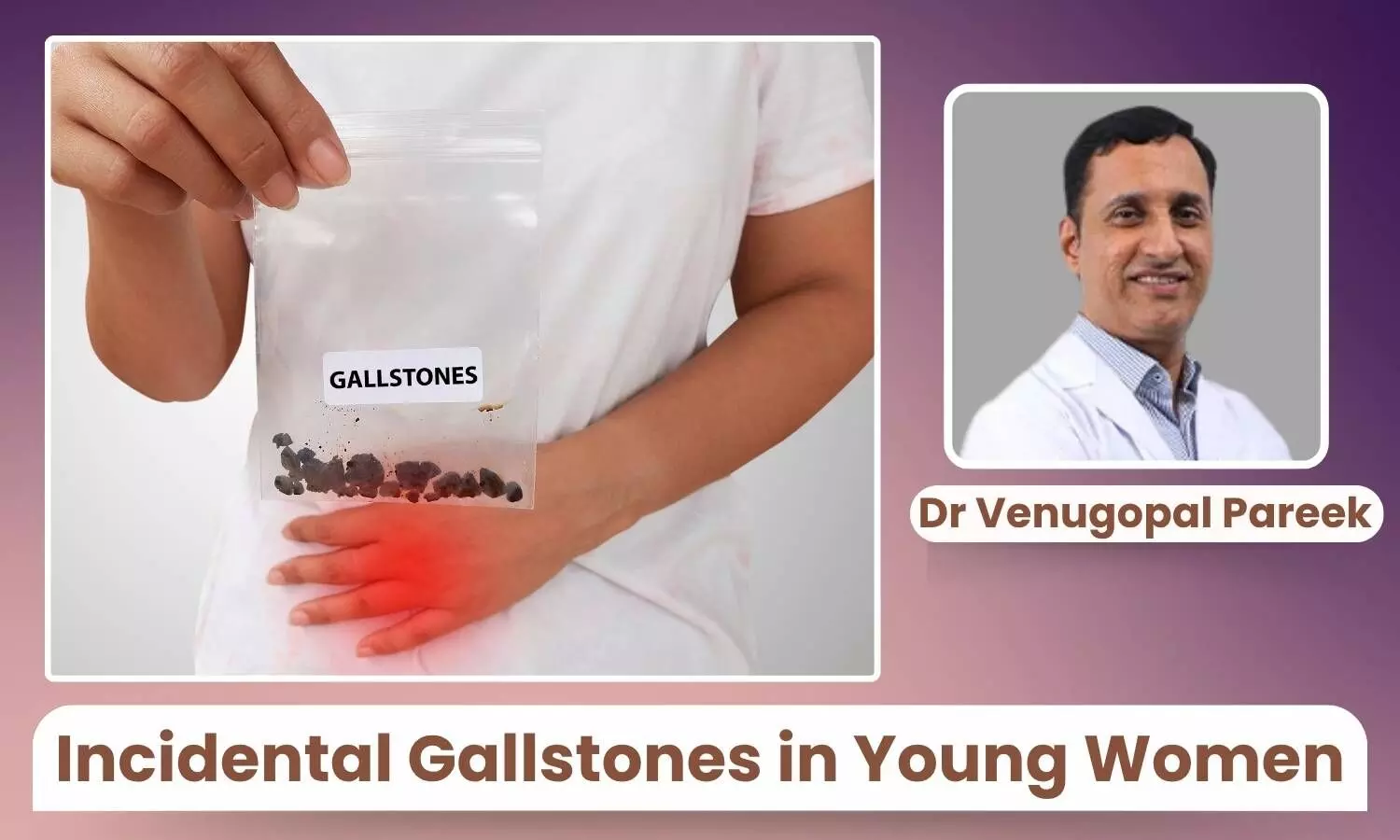Rise of Incidental Gallstones in Young Women: When Should We Intervene? - Dr Venugopal Pareek

It’s not uncommon these days to find gallstones turning up unexpectedly in young, otherwise healthy women, often during ultrasounds done for something entirely unrelated.
This rise in incidental gallstone detection has sparked concern, not because every case needs surgery, but because it raises the question: why are so many young women developing gallstones in the first place?
This trend isn’t just a blip. It reflects a larger shift in health patterns driven by changes in diet, hormone levels, and lifestyle habits that are becoming more prevalent in the 20s and 30s age group.
And while most of these stones are initially silent, understanding when and how to intervene is becoming a more relevant conversation in clinical practice.
Role of Hormones and “Four F” Rule
There’s an old mnemonic often used to remember gallstone risk factors: female, fertile, fat, and forty. While that’s a simplification, there’s truth to the fact that estrogen plays a major role in gallstone formation.
Hormonal fluctuations, especially those linked to pregnancy, oral contraceptive use, and PCOS, can increase cholesterol saturation in bile, a key trigger for gallstone development.
But now, we’re seeing stones in women who are neither overweight nor nearing forty. What’s changed?
Modern Diet Culture: Skipping Meals, High Fat, Low Fibre
Crash diets and long intermittent fasting windows, both increasingly popular on social media, are double-edged swords. When food intake is inconsistent or extremely low in fat, the gallbladder doesn’t empty properly. Bile stagnates, and over time, stones begin to form.
Add to that the popularity of high-fat “cheat meals,” processed food binges, and low-fibre routines, and you have a recipe for gallbladder sluggishness. It’s not uncommon to see a patient who swings between long periods of under-eating and short bursts of indulgence, unknowingly stressing their biliary system in the process.
Sedentary Factor
Physical inactivity has subtle but real metabolic consequences. A sedentary lifestyle contributes not only to sluggish digestion but also to poor gallbladder motility.
In women working desk jobs or managing irregular schedules with little time for exercise, this can tip the balance over time.
When Should We Treat?
Not all gallstones need to be removed. In fact, many are found incidentally and never go on to cause symptoms. That said, there are certain situations where a wait-and-watch approach isn’t ideal.
If a young woman begins experiencing upper abdominal discomfort or bloating after meals on a regular basis, especially after eating rich or fatty foods, it’s time to dig deeper.
Nausea, episodes of vague abdominal pain that come and go (often shrugged off as acidity or gastritis), or scans showing signs of gallbladder inflammation or bile sludge, these all point toward a gallbladder that isn’t coping well.
And in cases where other health conditions like diabetes or certain blood disorders are present, the threshold to consider surgical intervention becomes even lower.
When gallstones begin causing symptoms or if a patient is likely to have recurrent episodes, it’s best to consider surgical removal of the gallbladder—most often through a minimally invasive laparoscopic procedure.
The goal is to act early, before more serious complications like inflammation, infection, or pancreatitis have a chance to develop. Interestingly, even asymptomatic gallstones can carry emotional weight. Many young patients, upon hearing they have “stones,” experience anxiety.
Some fear that something serious is brewing inside them. Others, especially those dealing with body image concerns, begin associating the diagnosis with personal failure, assuming they must have “done something wrong.”
This is where clinical reassurance matters. We must separate facts from fear, while empowering patients with realistic information about prevention, monitoring, and if needed, timely surgical care.
Fortunately, there are ways to reduce the likelihood of developing gallstones, especially among younger women. Eating regular, balanced meals that include healthy fats can keep the gallbladder functioning as it should.
A diet rich in fruits, vegetables, and whole grains also helps support better digestion and overall gut health. It's equally important to steer clear of extreme dieting patterns, rapid weight loss or erratic eating can do more harm than good.
Gentle, consistent physical activity, even something as simple as walking daily, goes a long way. And for those dealing with hormonal imbalances, early medical guidance can make a meaningful difference in long-term outcomes.
Incidental gallstones are becoming part of the health story for many young women, but they need not be a cause for panic. As doctors, we must recognise the patterns driving this shift and help patients make sense of their options. Every gallstone doesn’t require a scalpel, but it does deserve thoughtful attention.
For young women navigating modern life’s dietary, hormonal, and emotional challenges, gallstone prevention and management should become a part of the larger wellness conversation, not just a footnote in their medical records.


